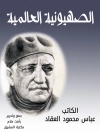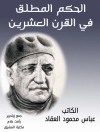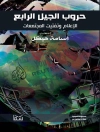This book responds to growing calls to conceptualise and analyse internal migration as a trajectory that unfolds over the life course of individuals rather than a series of discrete events. It combines macro and micro modes of analysis into a cohort framework to explore how individuals transition from one migration to the next. The book presents new methodological developments in longitudinal analysis and applies them to internal migration in 27 European countries. It demonstrates that the traditional dichotomy between migrants and non-migrants conceals a wide range of migration behaviour and heterogeneity among repeat migrants. It also reveals a continuity of migration behaviour: being exposed to the challenges and benefits of migration early in life predisposes individuals toward migration in adulthood. By adopting a cohort approach to migration coupled with state-of-the-art methods and novel concepts, this book provides new insights into internal migration for graduate students, academics and policymakers interested in understanding migration behaviour in Europe and beyond.
Jadual kandungan
Chapter 1. Internal Migration as a Life-Course Trajectory: An Introduction.- Chapter 2. Why Use a Cohort Approach to Analyse Internal Migration Trajectories?.- Chapter 3. Data for Cohort Analysis of Internal Migration: A Review.- Chapter 4. Cohort Measures of Migration.- Chapter 5. Age at First Adult Migration and Repeat Migration.- Chapter 6. Intergenerational Transmission of Internal Migration Behaviour: Does Migration Experience in Childhood Matter?.- Chapter 7. Sequence Analysis of Lifetime Internal Migration Trajectories: Onward, Return and Circular Migration.- Chapter 8. Internal Migration Capital: Linking Past and Future Migration over the Life Course.- Chapter 9. Internal Migration as a Life-Course Trajectory: Toward a Research Agenda on Repeat Migration.
Mengenai Pengarang
Aude Bernard is a demographer at the Queensland Centre for Population Research at the University of Queensland, Australia. Her research focuses on understanding migration processes and their consequences for individuals, regions and nations, particularly from a demographic perspective. Most of her work is comparative and has methodological focus to allow robust comparison between countries and over time. Her areas of research include migrant selectivity, migration decision making and the links between internal and international migration.












